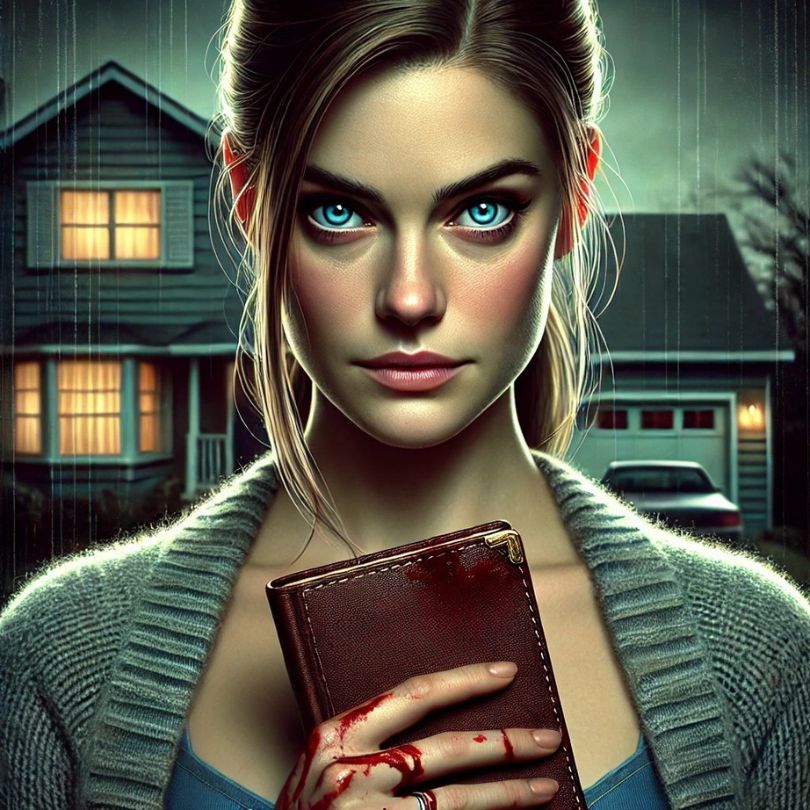There’s a unique thrill to seeing a film you’ve anticipated for months finally come to life on the big screen.
That’s how I felt watching Robert Eggers’ Nosferatu. From the moment the remake was announced, I’d been counting down to its release, and it didn’t just meet expectations. It sank its teeth right into them.
From those first shadowy frames, it was clear this wasn’t your typical vampire movie. This was gothic horror elevated to high art.
Eggers’ passion for the macabre drips from every desolate landscape and every intricately crafted costume.
Even the live rats and wolves feel more than just mere props.
Nosferatu is a slow-burning nightmare that creeps under your skin and lingers long after the credits roll.
The marketing was as masterful as the movie itself, showing admirable restraint in an era of spoiler-heavy trailers.
Teasing just enough to intrigue without spoiling Bill Skarsgård’s chilling portrayal of Count Orlok felt refreshingly old-school, much like the film itself.
As someone who often binges on jump-scare-filled, effects-heavy modern horror, I found Eggers’ approach rich, visceral, and textured. It’s a love letter to the genre’s origins.
But after the credits rolled, it got me thinking. What is it that makes Nosferatu so terrifying?

The Primal Fear of the Unknown
Eggers’ Nosferatu thrives on atmosphere—haunting silences, shadowy landscapes, and a title character whose mere presence makes you want to double-lock your door.
Do you remember being afraid of the dark as a child? Or perhaps you still are. That same instinctive dread powers Nosferatu’s effectiveness.
Count Orlok’s inhuman silhouette triggers our deepest evolutionary fears – the shape that’s almost human, but wrong enough to set off ancient alarm bells in our minds.
Scientists call this the ‘uncanny valley’ effect, where something appears human-like but different enough to provoke instinctive revulsion.
He’s humanoid enough to make us look twice, but grotesque enough to send shivers straight down the spine.
Count Orlok’s design was inspired by the imagery of plague and death. And his rat-like features and the back of his skull are a callback to medieval fears of pestilence.
He doesn’t just look scary; he embodies the spectres of sickness and decay.
The Sound of Silence: Using Atmosphere to Unnerve
Modern horror films love their orchestral stabs and screeching violins. But Nosferatu is eerily quiet.
Eggers’ remake follows this tradition with long stretches of near silence punctuated by unsettling sounds—a creaking floorboard, the faint scuttle of claws.
Why does this work? Because silence makes us squirm. Our brains are wired to fill the void, and when we can’t hear what’s creeping in the dark, our imagination goes into overdrive.
That’s where fear lives: in what we don’t see and don’t hear but know is there.
A Slow, Creeping Dread: Why Patience Pays Off
Nosferatu is a slow burn. There are no frantic chases or chaotic fight scenes.
Instead, fear oozes, inching closer and closer. It’s the cinematic equivalent of feeling a spider crawl up your arm—agonisingly slow, with every second amplifying the tension.
This pacing is deliberate. It gives us time to soak in the dread, to feel the weight of the shadows pressing down.
Robert Eggers’ 2024 adaptation of Nosferatu leans into this, using long takes and still frames to stretch the tension taut.

Why Silence and Shadows Make Count Orlok the Ultimate Predator
Count Orlok doesn’t talk much. He doesn’t monologue or explain his evil master plan.
He’s just there, watching, waiting, lurking. And that makes him infinitely scarier.
Psychologists often point out that we’re hardwired to fear what we don’t understand.
A shadow in the corner of the room. A strange sound at midnight. Count Orlok embodies this perfectly.
He’s not charming or relatable like some modern vampires. He’s otherworldly. He’s unknowable. And that’s what makes him so chilling.
When Eggers’ remake gives us glimpses of Orlok’s shadow crawling up walls or his clawed hand reaching for a victim, it’s not just visually stunning; it’s a direct assault on our primal fears.
What is he? What does he want? We don’t know. And that’s the point.
Also, Orlok’s vampirism serves as a dark reflection of human nature. His need to feed (and boy does he feed in Nosferatu), his isolation, his inability to exist in the light… these traits uncomfortably mirror our own darker impulses and social fears.

The Psychology of Isolation
One of the most fascinating aspects of Nosferatu is its focus on isolation. The characters are trapped—sometimes physically, sometimes emotionally—and the film exploits this to devastating effect.
In the 2024 version, Eggers intensifies this theme, using desolate landscapes and claustrophobic interiors to create a sense of entrapment.
Psychologically, isolation breeds fear. When we’re alone, our minds start playing tricks on us.
Was that a creak upstairs? Is there someone behind us? Nosferatu taps into this, making us feel the same suffocating loneliness as its characters.
By the time Count Orlok strikes, we’re already on edge.

Why Vampires Are Scary: Comparing Nosferatu to Modern Takes
Vampires have been scaring us for centuries, but not all vampires are created equal.
Modern portrayals often lean into charisma, romance, or even comedy. Think Edward Cullen’s brooding allure in Twilight or the cheeky antics of What We Do in the Shadows.
They are vampires, sure, but they’re approachable. Relatable. You might even want to hang out with them (assuming you’re okay with the occasional bite marks on your neck).
But Count Orlok is in a league of his own. There’s no sparkling skin, no witty banter, no redemption arc. He’s a predator. Pure and simple.
While vampires like Lestat from Interview with the Vampire seduce their prey with charm and elegance, Orlok skulks in the shadows, exuding menace with every crooked movement.
Take Dracula, for instance. He’s sophisticated, articulate, a master manipulator.
Orlok, on the other hand, is almost animalistic. His silence, his deliberate movements, his ghastly appearance—it all strips away the romantic veneer of vampirism and leaves us with something raw, primal, and infinitely more terrifying.
Eggers’ 2024 remake amplifies this distinction. While many modern vampire films are drenched in glamour and spectacle, Nosferatu returns to the roots of horror.
It doesn’t try to make Orlok relatable or fully human. Instead, it leans into his otherness, making him a creature that doesn’t just lurk in the shadows but is the shadows.
This refusal to modernise Orlok’s character is what sets Nosferatu apart. Where other vampire films invite us to empathise with the undead, Eggers’ vision reminds us why we feared them in the first place.
It’s not about romance or redemption. It’s about survival and the bone-chilling realisation that, in the face of true horror, we are utterly powerless.
The Timeless Power of Shadows
The shadows are practically a character in Nosferatu.
When Orlok’s elongated shadow creeps up the stairs, we’re not just watching a special effect – we’re experiencing a primal fear of being stalked.
Why are shadows so unnerving? Because they hide things. They blur the line between reality and imagination.
Is that just a coat hanging on the wall, or is it something worse? Shadows let us project our fears onto the unknown, creating a psychological playground for terror.
Eggers understands this perfectly. His 2024 remake plays with light and darkness in ways that feel both innovative and deeply rooted in the original’s aesthetic.
The result is a visual feast that leaves you clutching your seat, heart pounding.

Why Nosferatu Haunts Us
So, what makes Nosferatu so terrifying? It’s not just one thing. It’s the uncanny design of Count Orlok.
It’s also how Orlok moves unnaturally, exists impossibly, and breaks the fundamental rules of life and death.
Our brains are hardwired to feel deeply uncomfortable when our understanding of reality gets challenged.
It’s why that scene of him rising straight as a board from his coffin is so profoundly unsettling.
It’s the oppressive silence, the slow-burn pacing, the fear of the unknown. It’s the way the film taps into our primal fears—of isolation, of darkness, of things that go bump in the night.
Eggers’ 2024 adaptation doesn’t just revisit these ideas; it revels in them. It’s an ode to the psychology of fear, a reminder that true horror doesn’t need jump scares or flashy effects.
A century later, Nosferatu continues to frighten because it operates on multiple psychological levels.
While modern horror often relies on explicit gore or sudden scares, Nosferatu burrows deeper into our psyche.
It presents a figure that’s simultaneously familiar and alien, triggering both our fear of death and our fear of life corrupted.
The film works its dark magic by engaging our most primitive fears whilst adding layers of psychological complexity.
It’s not just about being scared – it’s about confronting the shadows that lurk in our own minds.




Leave a Reply